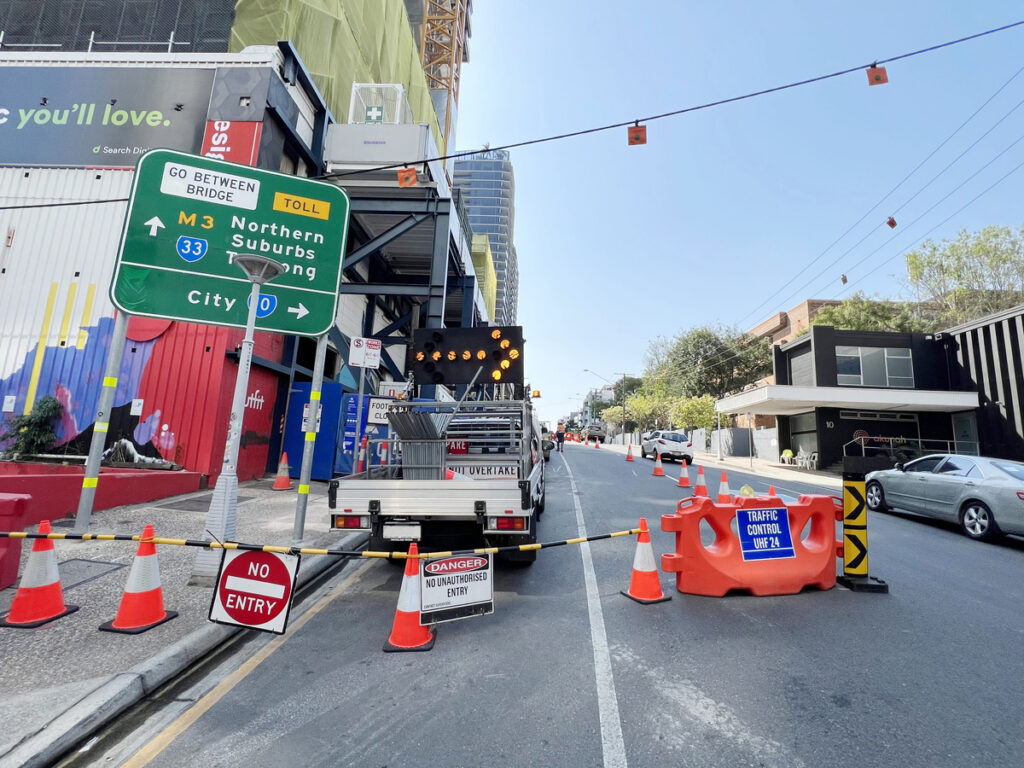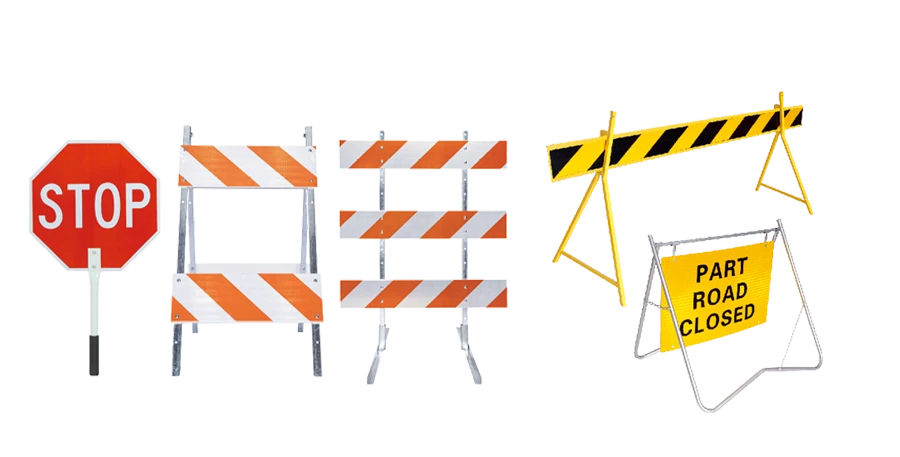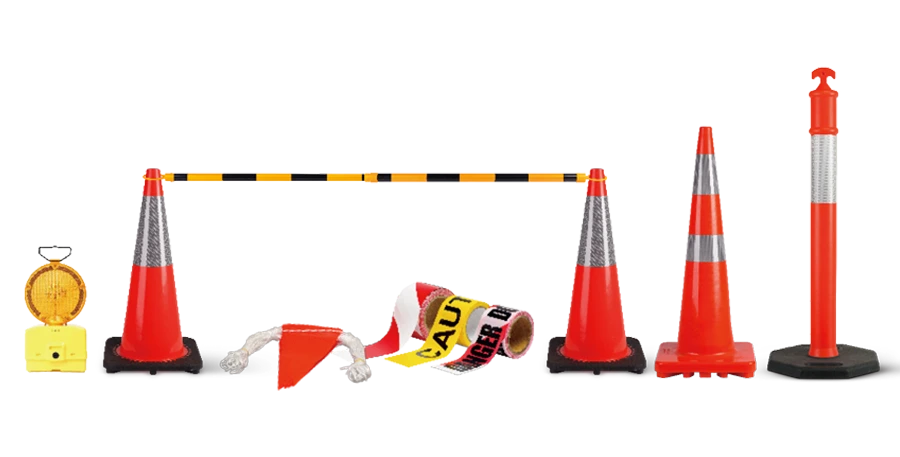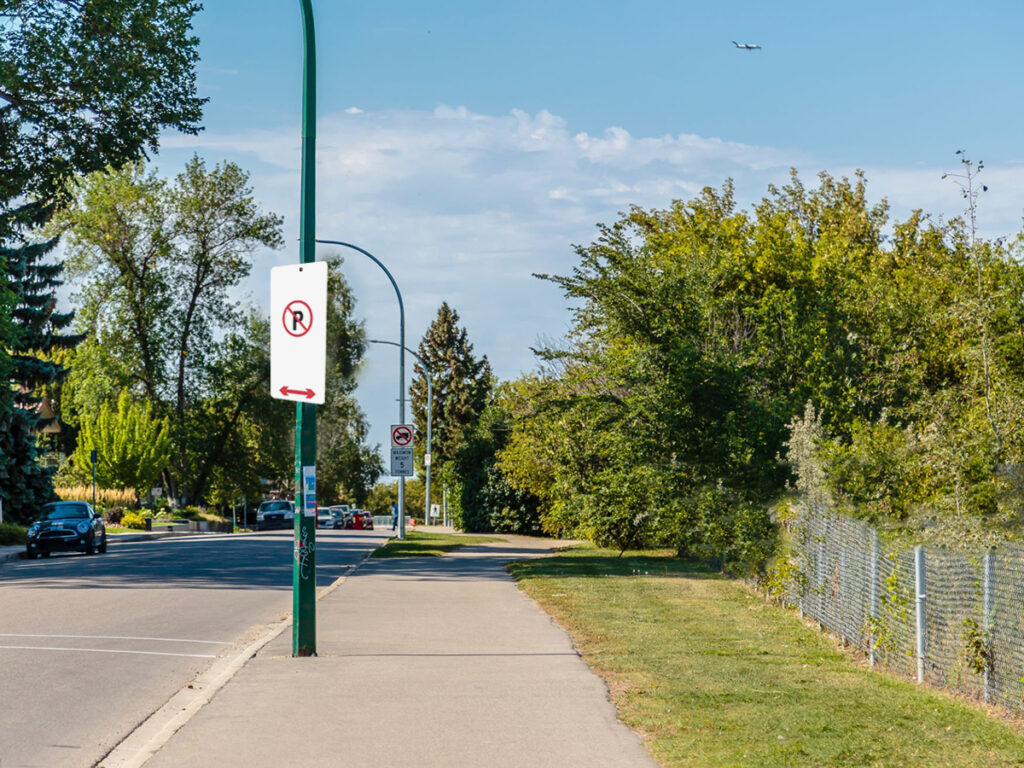
Los conductores pueden confundirse al leer un letrero de estacionamiento australiano. Las señales de control lineales funcionan a lo largo de una parte de la acera. Señales de control de área cubren zonas de estacionamiento o aparcamientos enteros. Muchos conductores preguntan, "¿Esta regla se cubre solo aquí?, o en todas partes?"Saber la diferencia ayuda a los conductores a no obtener multas caras. También les ayuda a estacionar de la manera correcta. Cada estado y territorio usa estas mismas reglas. Esto hace que las cosas sean lo mismo en toda Australia. Observar cada tipo rápidamente hace que el estacionamiento sea fácil y menos estresante.
Para garantizar la claridad y el cumplimiento de los estándares australianos, Es importante comprender la base de estas regulaciones.. COMO 1742 es el estándar que rige el diseño de los siglos de tráfico en Australia, y comprenderlo puede ayudarlo a navegar las señales de estacionamiento de manera más efectiva.
Para una inmersión más profunda en 1742 y como se forma Señalización de tráfico australiano, Lea nuestro blog: Comprensión como 1742: La base de las regulaciones de letreros de tráfico australianos.
Control de llave
- Las señales de control lineal tienen flechas.. Estas flechas muestran dónde comienzan y terminan las zonas de estacionamiento.. Esto ayuda a los conductores a conocer las reglas en cada lugar..
- Las señales de control de área cubren áreas o zonas enteras de estacionamiento.. Estas señales están en las entradas y no tienen flechas.. Dejan claras las normas para toda la zona.
- Es importante leer todos los paneles y flechas en las señales lineales.. Se pueden aplicar diferentes reglas en diferentes momentos o días..
- Los ayuntamientos utilizan el AS 1742.11 estándar para señales de estacionamiento. Esto hace que las señales se vean y funcionen igual en todas partes de Australia.. Ayuda a detener la confusión y evita que las personas reciban multas..
- Conocer estas señales ayuda a los conductores a estacionarse de la manera correcta. Les ayuda a evitar multas.. También hace que el estacionamiento sea más seguro y justo para todos..
Tipos de señales de estacionamiento en Australia
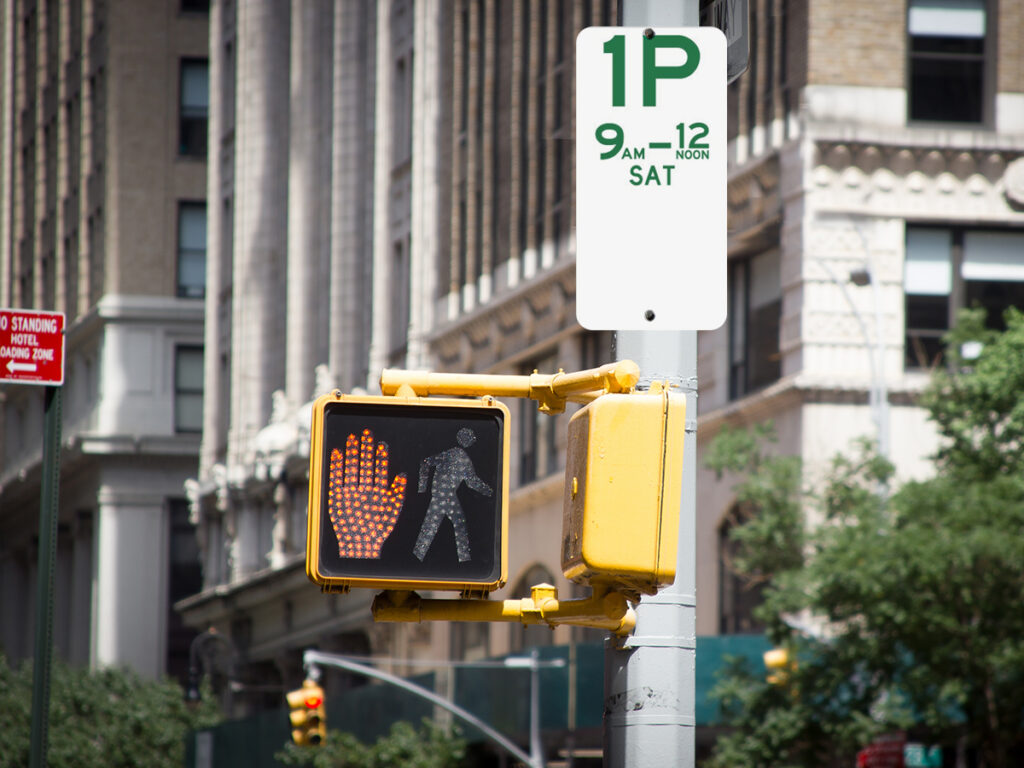
Señales lineales
Letreros lineales Control de estacionamiento a lo largo de una longitud específica de acera o en la carretera. Estas señales usan flechas para mostrar dónde comienzan y terminan las reglas. Los conductores ven estas señales colocadas al principio, A veces en el medio, y al final de una sección controlada. Las reglas en el letrero se aplican solo al área marcada por las flechas. Por ejemplo, a 1P Signo con una flecha que apunta a la derecha significa que los conductores pueden estacionar durante una hora a partir de ese punto en adelante, hasta el siguiente signo o el final de la zona. Las señales lineales ayudan a mantener el tráfico en movimiento y asegúrese de que los espacios de estacionamiento se entreguen regularmente.
Señales de control de área
Señales de control de área Administre el estacionamiento dentro de un área completa, como un estacionamiento o un grupo de calles. Estos signos generalmente aparecen en la entrada del área.. Las reglas se aplican en todas partes adentro, no solo cerca del letrero. Por ejemplo, Una señal en la entrada podría decir, “Permitir solo los titulares - 8 a.m. a 6 p.m.” Cada conductor que ingrese debe seguir esta regla hasta que salgan del área. Las señales de control de área reducen el desorden del letrero y dejan en claro qué reglas se aplican en todo el espacio.
El COMO 1742.11 Estandar estándar cómo usar señales de control lineales y de área. Cubre letreros y marcas de pavimento para lugares donde se permite el estacionamiento, restringido, o no permitido en absoluto. El estándar también brinda orientación sobre cómo encender, reflejar, lugar, y diseñar cada cartel de estacionamiento australiano. Esto asegura que cada signo se vea y funcione de la misma manera en todo el país.. Las reglas uniformes ayudan a los conductores a comprender los controles de estacionamiento rápidamente, No importa a dónde viajen.
Nota: El uso constante de los tipos de letreros de estacionamiento australianos ayuda a los consejos y conductores a evitar confusiones y hace que la aplicación sea más justa.
Señales de control lineales
Definición
Las señales de control lineal regulan el estacionamiento a lo largo de una longitud específica de acera o en la carretera. Estas señales se aplican solo a la sección de la carretera marcada por el letrero y sus flechas. Los consejos usan señales de control lineal para administrar cuánto tiempo pueden permanecer los vehículos en un lugar, Quién puede estacionar, y cuando se permite el estacionamiento. Este enfoque ayuda a mantener el flujo del tráfico y garantiza un acceso justo a los espacios de estacionamiento..
Identificación
Los controladores pueden identificar señales de control lineales por sus características de diseño únicas. Estos letreros a menudo muestran varios paneles de control en un letrero.. Cada panel muestra una regla o límite de tiempo diferente. Las señales pueden aparecer en formatos estrechos o anchos., dependiendo del tipo de control necesario. Algunas señales usan un solo panel para reglas simples, como “1PAG” o “30 Estacionamiento de minuto.” Otros combinan múltiples paneles uno al lado del otro para mostrar diferentes condiciones, como los tiempos de carga o los requisitos de permiso.
Las características visuales clave incluyen:
- Múltiples paneles de control separados en un solo letrero
- Firmar números de la serie R5-1 a R5-46, cada uno coincide con un tipo específico de control
- Formato estrecho para reglas individuales, Formato amplio para las limitaciones del usuario
- Paneles dispuestos uno al lado del otro para controles de estacionamiento complejos
Estos elementos de diseño establecen letreros de control lineal aparte de otros tipos de letreros de estacionamiento australiano, que puede usar diseños más simples o paneles individuales.
Normas
Las señales de control lineal muestran reglas claras para estacionamiento a lo largo de la sección marcada. El letrero les dice a los conductores cuánto tiempo pueden estacionar, ¿A qué hora se aplican las reglas?, y cualquier condición especial. Por ejemplo, Una señal podría decir “2P 8 am - 6pm my –fri,” Es decir, los conductores pueden estacionar durante dos horas durante esos momentos de lunes a viernes. Si un letrero tiene más de un panel, Cada panel da una regla diferente. Los conductores deben seguir todas las reglas que se muestran en el signo de esa sección de la acera.
Los consejos colocan estas señales al principio, A veces en el medio, y al final de la zona controlada. Las reglas solo se aplican entre los signos y en la dirección mostrada por las flechas.
Consejo: Siempre revise cada panel en un signo de control lineal. Algunas reglas cambian por hora del día o día de la semana.
Flechas
Las flechas juegan un papel clave en las señales de control lineal. Muestran a los conductores exactamente dónde comienzan las reglas y terminan. Una flecha que apunta a la derecha significa que la regla se aplica desde el signo en el siguiente signo o el final de la zona. Una flecha que apunta a la izquierda significa que la regla cubre el área antes del letrero. Algunas señales tienen flechas apuntando en ambos sentidos, Mostrar la regla se aplica en ambas direcciones desde ese punto.
La dirección de la flecha le dice a los conductores dónde deben seguir la regla de estacionamiento. Los consejos usan flechas para asegurarse de que no haya confusión sobre dónde comienza y termina cada regla.
Nota: Si un letrero no tiene flecha, La regla generalmente se aplica al espacio directamente frente al letrero..
Señales de control de área
Definición
Señales de control de área Establecer reglas para estacionamiento en un área completa. No solo cubren un lugar o una pequeña parte de la acera. Los consejos usan estos letreros en lugares como aparcamientos, estacionamiento privado, o grupos de calles. Las reglas en el letrero se aplican en todas partes dentro del área. Los conductores ven un signo en la entrada. Deben seguir las reglas hasta que se vayan. Esto hace que el estacionamiento sea menos confuso y más fácil de administrar.
Identificación
Los conductores pueden detectar señales de control del área por dónde están y cómo se ven. Estas señales generalmente están en la entrada de un estacionamiento o zona.. El letrero tiene un gran rumbo, como “Área de estacionamiento” o “Solo titulares de permisos.” Las reglas, veces, y cualquier tarifa se muestra claramente bajo el encabezado. Las señales de control del área no tienen flechas. Sin flechas significa que las reglas son para toda el área, No solo una parte.
Las características clave incluyen:
- Grande, encabezados en negrita en la parte superior del letrero
- Reglas claras, veces, y condiciones mostradas
- No hay flechas en el letrero
- Colocado en la entrada al área
Consejo: Verifique siempre las señales de control del área en las entradas. Si no hay flechas, Las reglas son para toda el área.
Normas
Las señales de control del área muestran todas las reglas para el área. Estas reglas pueden ser los límites de tiempo, permisos, o pagar por el estacionamiento. Por ejemplo, Una señal podría decir, “Solo titulares de permisos - 8 am a 6pm,” o “2P Ticket - 9 a.m. a 5 p.m. de lunar a fri.” Cada conductor en el área debe seguir estas reglas, No importa dónde establezcan. Los consejos usan estos signos para que las reglas sean claras y justas para todos.
Un letrero de control de área típico puede verse así:
| Título | Descripción de la regla | Tiempo/condición |
|---|---|---|
| Área de estacionamiento | Solo titulares de permisos | 8am–6pm |
| Área de estacionamiento | 2P boleto | 9AM - 5pm de lunes a fri |
Nota: Las señales de control del área ayudan a detener demasiados signos y hacer que las reglas sean fáciles de entender.
Colocación de señales
Los consejos ponen letreros de control del área en todos los sentidos al área. Esto asegura que todos los conductores vean las reglas antes de ingresar. Los letreros deben ser fáciles de ver en un automóvil.. Los consejos también pueden usar marcas o señales adicionales en el interior, Pero el signo principal siempre está en la entrada.
Pautas de colocación clave:
- Poner señales en todos los sentidos para los autos
- Asegúrese de que las señales sean fáciles de ver en la carretera
- No ponga letreros adentro a menos que sea necesario para obtener ayuda adicional
Los estándares de letreros de estacionamiento australianos dicen que los consejos deben seguir reglas estrictas sobre hacia dónde van las señales. Esto mantiene las cosas justas y lo mismo en todas partes.
Recordar: Si ve un letrero de control de área cuando ingresa, Las reglas son para toda el área hasta que te vayas.
Diferencias clave
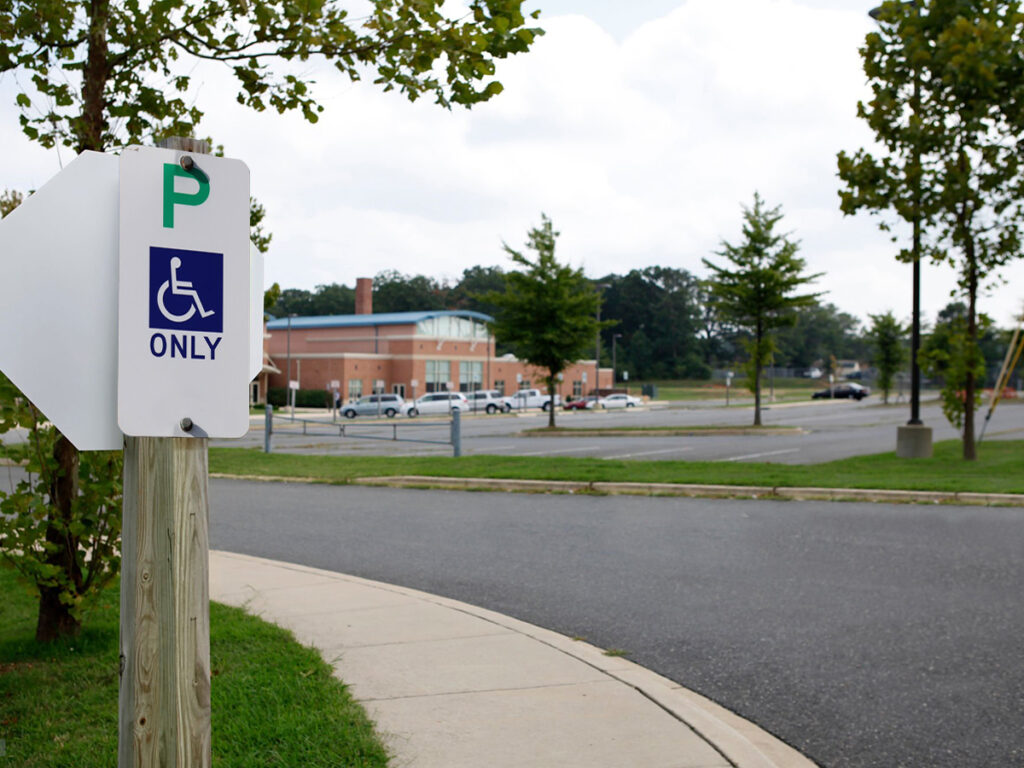
Tabla de comparación
La siguiente tabla muestra cómo las señales de control lineales y de área son diferentes. Este aspecto de lado a lado ayuda a los conductores y los consejos a ver cómo funciona cada tipo..
| Característica | Señales de control lineales | Señales de control de área |
|---|---|---|
| Cobertura | Longitud específica de la acera o en la carretera | Área entera, aparcamiento, o zona |
| Colocación de señales | Comenzar, medio, y fin de la zona | En cada entrada al área |
| Flechas | Sí - Mostrar dirección de control | Sin flechas |
| Aplicación de reglas | Solo entre señales y flechas | En todas partes dentro del área |
| Uso típico | Calles, estacionamiento en la carretera | Aparcamiento, zonas de permiso, alrededores |
| Letrero desordenado | Se necesitan más señales | Menos señales, menos desorden |
| Acción del conductor | Verifique las flechas y los paneles | Compruebe solo el signo de entrada |
Consejo: Busque flechas en señales lineales. Busque grandes títulos en las señales de control del área.
Impacto del conductor
Las señales de control lineal y de área cambian cómo actúan los conductores y cómo los consejos verifican las reglas. Las señales lineales tienen flechas y paneles. Los conductores deben ver dónde comienza y termina cada regla. Esto es bueno para las calles ocupadas. Ayuda a los autos a moverse y sigue estacionando justo. Los consejos ponen estos letreros en muchos lugares. Esto ayuda a los conductores a notar las reglas y detener los errores.
Las señales de control del área establecen reglas para zonas enteras. Los conductores ven un signo en la entrada. Las reglas son para todas partes adentro. Esto hace que las cosas sean menos confusas y hay menos señales. Los estudios muestran que poner letreros en las entradas principales ayuda a los conductores a seguir las reglas. También detiene acciones inseguras en grandes áreas. Cuando los consejos usan señales de control del área con cheques y enseñanza, Más personas siguen las reglas.
La investigación sobre la velocidad y los controles de la luz roja muestra lo mismo. Señales de advertencia en lugares importantes, para ambos tipos, Ayuda a los conductores a notar y tomar decisiones más seguras. Los programas con letreros y cheques funcionan mejor. Conducen a menos descansos de reglas y mejores hábitos. Los consejos deben mantener estos sistemas trabajando para mantener a las personas siguiendo las reglas.
Nota: Conocer la diferencia entre las señales de control lineales y de área ayuda a los conductores no a recibir multas y estacionarse de la manera correcta. Los consejos obtienen reglas más claras y carreteras más seguras.
Interpretación de reglas de letreros de estacionamiento australianos
Límites de tiempo
Las señales de estacionamiento en Australia muestran una variedad de límites de tiempo. Estos límites ayudan a los consejos a administrar la facturación del estacionamiento y garantizar el acceso justo. Los límites de tiempo más comunes incluyen 5 minutos, 15 minutos, 30 minutos, 1 hora, 2 horas, y 3 horas. Cada límite de tiempo tiene reglas específicas y métodos de aplicación. Por ejemplo, a “1PAG” Señal significa que los conductores pueden estacionar por una hora. Si se aplica una tarifa, Los conductores deben pagar a un medidor o máquina. Los consejos hacen cumplir estos límites estrictamente. Mover un vehículo dentro de la misma sección de la carretera o volver a alimentar el medidor no reinicia el tiempo. Los conductores no deben volver a la misma sección dentro de una hora después de que expire el tiempo.
| Límite de tiempo | Significado y condiciones | Detalles de cumplimiento |
|---|---|---|
| 5 minutos (P5) | Máximo 5 minutos en todo momento, sin tarifa | No debe exceder 5 minutos; No se requiere tarifa |
| 15 minutos (¼ P) | Máximo 15 Minutos durante los tiempos establecidos, sin tarifa | Estacionamiento limitado a 15 Actas durante las horas indicadas |
| 30 minutos (½ P) | Máximo 30 Minutos durante los tiempos establecidos, sin tarifa | Estacionamiento limitado a 30 Actas durante las horas indicadas |
| 1 hora (1PAG) | Máximo 1 hora durante los tiempos de fijación, Tarifa por pagar | Debe pagar una tarifa; Límite de tiempo estrictamente aplicado |
| 2 horas (2PAG) | Máximo 2 Horas durante los tiempos de fijación, Tarifa o sin tarifa | Tarifa requerida entre semana; Sin tarifa los domingos |
| 3 horas (3PAG) | Máximo 3 Horas durante los tiempos de fijación, Tarifa por pagar | Se requiere tarifa requerida; Límites de tiempo forzados |
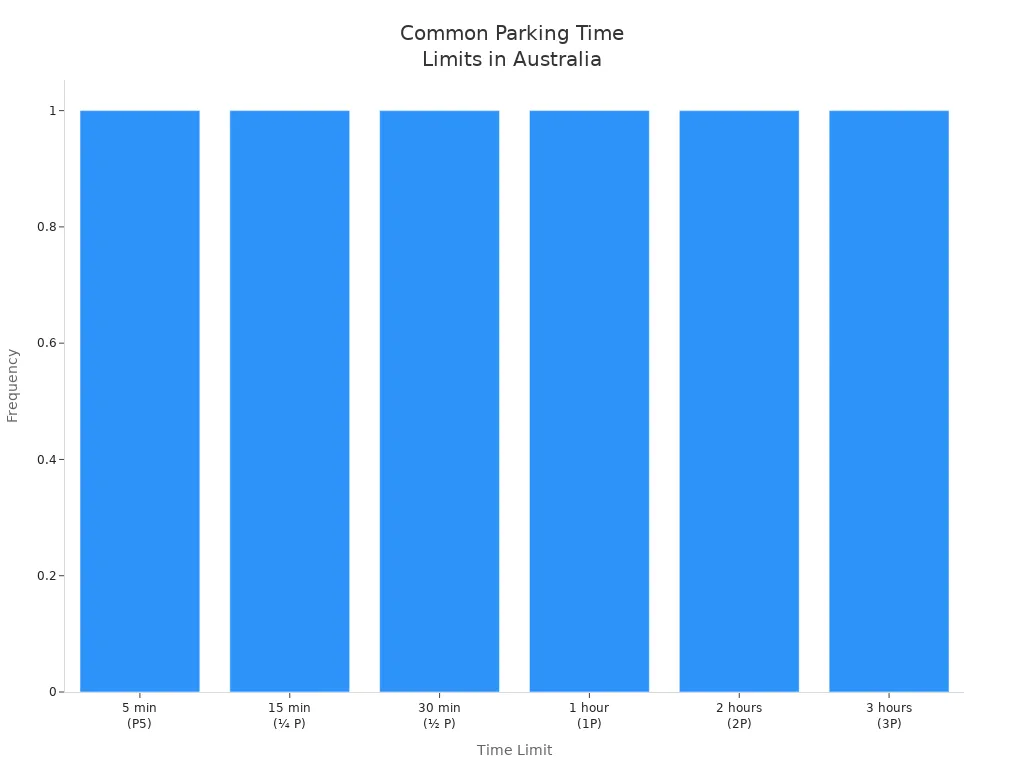
Consejo: En días festivos, Si el letrero enumera los días de la semana, El estacionamiento puede ser gratis.
Arrows explicó
Las flechas en las señales de estacionamiento muestran dónde se aplican las reglas. Una flecha derecha significa que la regla comienza en el signo y continúa hasta el siguiente signo o el final de la zona. Una flecha de punta izquierda cubre el área antes del letrero. Las flechas que apuntan en ambos sentidos significan que la regla se aplica en ambas direcciones. Sin flecha significa que la regla se aplica solo al espacio directamente frente al letrero. Los consejos usan flechas para aclarar los límites y reducir la confusión.
Letreros de múltiples condiciones
Algunas señales de estacionamiento muestran más de una regla. Estos signos de múltiples condiciones utilizan paneles o líneas separadas para cada condición.. Por ejemplo, Un letrero podría mostrar “1P 8 am - 6pm my –fri” y “2P 8 AM - 12pm sáb.” Los conductores deben leer cada panel y seguir la regla que coincida con el día y la hora. Los consejos usan estas señales para administrar el estacionamiento para diferentes necesidades, como la carga, titulares de permisos, o eventos especiales.
Nota: Siempre revise todos los paneles en un letrero. Las reglas pueden cambiar por tiempo o día.
Estándares de diseño
Las normas australianas establecen reglas estrictas para el diseño de letreros. Los letreros deben usar fuentes transparentes, espaciado correcto, y colores fáciles de leer. El tipo de letra de la serie de transporte es obligatorio. Los letreros deben tener un fondo blanco con verde, rojo, o texto negro. Los consejos colocan letreros a una altura y ángulo que los conductores pueden ver fácilmente. Estas reglas de diseño ayudan a todos a comprender los controles de estacionamiento de manera rápida y segura..
COMO 1742.11 Cláusulas
Flechas regulatorias
COMO 1742.11 Establece reglas estrictas para el uso de flechas en letreros de estacionamiento. Las flechas regulatorias muestran a los conductores exactamente donde comienza y termina una regla de estacionamiento. Los consejos deben usar flechas para evitar confusiones. Una flecha derecha significa que la regla se aplica desde el signo en adelante. Una flecha de punta izquierda cubre el área antes del letrero. Las flechas que apuntan en ambos sentidos indican que la regla se aplica en ambas direcciones desde el signo. Si un letrero no tiene flecha, La regla solo se aplica al espacio directamente frente al letrero..
Consejo: Siempre verifique la dirección de la flecha antes del estacionamiento. La flecha le dice a los conductores dónde comienza y termina la regla.
Colocación de señales de área
El estándar requiere que los consejos coloquen letreros de control de área en cada entrada del vehículo a un área controlada. Esto asegura que todos los conductores ven las reglas antes de ingresar. El letrero debe ser visible desde el camino y no bloqueado por árboles u otros objetos. Los consejos deben evitar colocar letreros de área dentro del área a menos que se necesite una orientación adicional.. La colocación adecuada ayuda a los conductores a comprender las reglas y reduce el riesgo de multas.
Puntos clave para la colocación de la señal de área:
- Coloque en cada entrada para vehículos
- Asegure una visibilidad clara desde el camino
- Evite los signos ocultos u obstruidos
Formato de tiempo
COMO 1742.11 Proporciona pautas claras sobre cómo mostrar los tiempos en las señales de estacionamiento. Los tiempos deben usar el reloj de 12 horas con “soy” o “p.m” en minúsculas. El estándar requiere un guión entre los tiempos de inicio y finalización, como “8am–6pm”. Los días de la semana deben aparecer en mayúsculas, Por ejemplo, “Mi - lata”. Este formato ayuda a los conductores a leer y comprender las reglas rápidamente.
| Formato correcto | Ejemplo |
|---|---|
| 12-reloj de hora | 9AM - 5pm |
| Días en mayúsculas | Mi - lata |
| Separador de tablero | 8am–6pm |
Espaciado de letreros
El espaciado de signos es importante para las señales de control lineal. COMO 1742.11 establece que los signos deben aparecer al principio, A veces en el medio, y al final de una zona controlada. Para largas secciones de bordillo, los consejos deben colocar letreros cada 30 a 60 medidores. Esto asegura que los conductores siempre puedan ver una señal y conocer las reglas. El espacio adecuado evita la confusión y apoya la aplicación de la ley justa.
Nota: Si los conductores no pueden ver una señal, Puede que no sepan la regla. Los consejos deben seguir reglas de espaciado para mantener el estacionamiento justo y claro.
Requisitos visuales y de montaje
Altura y visibilidad
Las señales de estacionamiento australianas deben ser fáciles de ver para todos. Los consejos ponen estas señales a una altura establecida, generalmente 2 a 2.5 metros sobre el suelo. Esto evita que los autos estacionados o las cosas en la calle oculten el letrero. Si un letrero es demasiado bajo, Puede ser bloqueado por automóviles o bancos. Si es demasiado alto, Es posible que los conductores no puedan leerlo de sus autos. Los consejos también giran un poco los letreros, por lo que se enfrentan al tráfico que se dirige hacia ellos. Esto ayuda a los conductores a detectar la señal a medida que se acercan. Buena colocación de señales significa menos confusión y estacionamiento más seguro.
Consejo: Siempre mire hacia arriba y hacia adelante para ver las señales de estacionamiento, Especialmente en las áreas de la ciudad ocupada.
Reflectividad
Se deben ver letreros de estacionamiento en Australia durante el día y por la noche. Los consejos usan material brillante especial para que esto suceda. El AS/NZS 1906 Standard dice cuán brillantes deberían ser los signos en diferentes lugares. En las ciudades, Láminas prismáticas de alta intensidad se usa a menudo. Este tipo dura sobre 10 años y es muy brillante. Para caminos ocupados o importantes, Láminas de grado de diamante es aún más brillante y puede durar 12 años. Estos letreros de ayuda de materiales se destacan en la oscuridad, lluvia, o niebla. Las carreteras más grandes o más rápidas pueden necesitar clase 1 o clase 400 Hojas para brillo adicional. Las carreteras más pequeñas o privadas a menudo se usan Clase 2 chapas. Los consejos eligen el mejor material para cada lugar para que los conductores siempre puedan ver las reglas.
Tipo de letra y símbolos
Las señales de estacionamiento australianas usan el tipo de letra de la serie de transporte. Esta fuente es audaz y fácil de leer desde muy lejos. Las letras y los números son gruesas y espaciadas. Las señales tienen un fondo blanco con verde, rojo, o escritura negra para que las palabras se destacen. Símbolo, Como la silla de ruedas para el estacionamiento accesible, Sigue las reglas del mundo. Estas imágenes ayudan a los conductores a comprender las reglas rápidamente, Incluso si no leen bien el inglés. El uso de la misma fuente y símbolos en todas partes en Australia hace que las señales sean fáciles de detectar y seguir.
Nota: Escritura y símbolos claros ayudan a todos a leer letreros de estacionamiento, incluso visitantes o personas que tienen problemas para ver.
Orientación de instalación
Lista de verificación
Poner letreros de estacionamiento de la manera correcta ayuda a todos a comprender las reglas. También se asegura de que las señales sigan la ley. Los instaladores deben seguir pasos para que no cometan errores.
Una lista de verificación normal tiene estos puntos:
- Asegúrese de que el tipo de signo y el mensaje sean correctos.
- Verifique que el letrero esté entre 2 y 2.5 metros altos.
- El letrero debe enfrentar los autos que se dirigen hacia él.
- Use el material brillante correcto como dicen las reglas.
- Busque cualquier daño o problema antes de poner el letrero.
- Arregle el letrero con fuerza para que no se mueva ni se robe.
- Escriba cuándo y dónde se presentó el letrero para los registros del consejo.
Consejo: Siempre revise la dirección y el lugar del signo antes de terminar el trabajo.
Aprobación del consejo
Los consejos locales son muy importantes al poner letreros de estacionamiento. Miran y aceptan todos los diseños y lugares de los letreros.. Los instaladores deben dar planos completos con el tipo de signo, palabras, y lugar exacto. Los consejos verifican estos planes con AS 1742.11 y reglas locales.
Después de decir que sí, Los consejos pueden visitar el lugar durante o después de que aumente la señal. Se aseguran de que el letrero siga todas las reglas y conductores pueda verlo. Los consejos también mantienen una lista de cada signo que han acordado para más tarde.
Problemas comunes
Pueden ocurrir algunos problemas al colocar letreros de estacionamiento. La gente a veces cambia señales sin permiso. En un suburbio de Melbourne, Alguien cambió las señales de estacionamiento y no le dijo al consejo. La gente recibió multas por nuevas reglas que no sabían. El consejo se enteró, detuvo las multas, y dijo lo siento.
Si los instaladores y los consejos no hablan bien, puede causar confusiones. Los signos en el lugar equivocado o con palabras confusas pueden iniciar argumentos.
Para detener estos problemas, Los consejos e instaladores deben:
- Use accesorios especiales que sean difíciles de cambiar.
- Cuéntale a la gente local sobre cualquier cambio.
- Verifique las señales a menudo por daños o cambios realizados sin preguntar.
Nota: Buenos pasos y cheques regulares ayudan a las personas a confiar en las reglas y se aseguran de que el estacionamiento sea justo.
Conocer la diferencia entre las señales de control lineales y de área ayuda a los conductores a estacionar de la manera correcta y no obtener multas. Las señales lineales tienen flechas y paneles que muestran dónde están las reglas. Las señales de control de área establecen reglas para toda una zona o aparcamiento. Los conductores deben buscar flechas o grandes encabezados para saber qué tipo de signo es. Si quieres aprender más, Hay algunos recursos útiles:
- El 1742.11-1999 estándar, ‘Manual de dispositivos de control de tráfico uniforme: controles de estacionamiento’
- Otro como 1742 Estándares de la serie, como 1742.1 y como 1742.2
- Puede encontrar actualizaciones y acceso en línea en intertekinform.com
Mantenerse al día ayuda a todos a estacionarse de manera segura y seguir las reglas en Australia.
Preguntas frecuentes
¿Cuál es la principal diferencia entre las señales de estacionamiento de control lineal y de área??
Los signos de control lineal solo cubren una determinada parte de la acera. Estas señales usan flechas para mostrar dónde comienza y termina la regla. Las señales de control del área establecen reglas para un estacionamiento o zona completa. Usualmente ves estos letreros en la entrada. Los conductores deben buscar flechas o grandes encabezados para saber qué signo es.
¿Las reglas de estacionamiento cambian en días festivos?
Muchas señales de estacionamiento muestran los días de la semana. Si un letrero no dice nada sobre los días festivos, El estacionamiento podría ser gratuito entonces. A veces, Los consejos hacen reglas especiales para las vacaciones. Los conductores siempre deben consultar el sitio web del consejo local para obtener las últimas reglas.
¿Cómo pueden los conductores evitar las multas de estacionamiento??
Los conductores deben leer cada señal de estacionamiento con mucho cuidado. Deberían buscar flechas, límites de tiempo, y cualquier regla especial. Si los conductores siguen lo que dice el letrero, Pueden evitar recibir multas. Los consejos verifican estas reglas de cerca.
¿Por qué algunos letreros de estacionamiento tienen múltiples paneles??
Algunas señales de estacionamiento tienen más de un panel para mostrar diferentes reglas. Cada panel puede tener una regla durante una determinada hora o día. Por ejemplo, Un panel puede permitir la carga por la mañana.. Otro panel podría establecer un límite de tiempo en la tarde. Los conductores deben seguir la regla que coincide con el momento en que se estacionan.
Quien instala y aprueba letreros de estacionamiento en Australia?
Los consejos locales están a cargo de colocar letreros de estacionamiento. Ellos usan el AS 1742.11 estándar para que todos los signos son los mismos. Los consejos verifican las señales a menudo y los cambian si es necesario.





